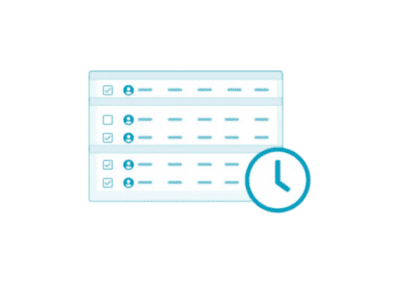In a controversial move by the Obama administration, home care workers across America will now fall under the Federal Labor Standards Act as of January 1st, 2015. Supporters for low-wage workers have advocated for this change, emphasizing that home care workers, who care for elderly and disabled Americans, were misclassified into the same “companionship services” category as babysitters.
This meant that they were not entitled to a minimum wage and did not receive overtime for working over 40 hours a week. According to the Obama administration, almost 40 percent of home care workers receive government benefits like food stamps and Medicaid. While many who advocate for home care workers have heralded this as a win for their cause, opponents have stated that higher wages will make home care too expensive for the clients they serve.
Some have even stated that it will force many individuals to leave their homes and enter institutional living. Opponents to the change also assert that clients will be forced to cut back hours, ultimately leading to lower pay. Regardless of where you stand on the debate, as of January 1st 2015, the changes will be going through and companies will be forced to adjust.
2 FLSA Requirements
Home care agencies and other third party employers are required to pay at least the federal minimum wage and overtime pay to all direct care workers, regardless of their duties. Direct care workers are workers who provide home care services, such as nursing assistants, home health aides, personal care aides, caregivers, and companions. This also applies to live-in domestic workers.
1. Minimum Wage
The federal minimum wage is currently $7.25 an hour, though many states have their own minimum wage laws. When a worker is protected by both state and federal minimum wage laws, the worker is entitled to the higher minimum wage.
2. Overtime
Workers who are covered under federal overtime pay protections must be paid one-and-a-half times their regular rate of pay after 40 hours of work in a workweek.
3. Record Keeping
Organizations are also required to keep basic employee time and pay records for any nonexempt direct care worker they employ, including the hours they work.
Notes on Travel Time
Travel time must be paid if the worker travels between the homes of more than one client during the day on behalf of the same home care agency, or transportation for the client to medical appointments or on errands. Travel time does not have to be paid if the worker is completely relieved of their duties and is given an uninterrupted period long enough to effectively use the time for their own purposes. This includes meal breaks, sleep time, and personal time.
Tactics to Comply: Workforce Management
Obviously your first step to comply with the new legislation is to implement the federal minimum wage. Beyond that, things get more complicated. You must keep proper employee records, pay for overtime or attempt to prevent it, and still remain profitable. Workforce Management such as basic HR systems, time & attendance, and scheduling solutions can help home health care organizations facing new regulations comply with the law and save time administering their staff. Celayix Software has helped home health care organizations effectively manage and monitor thousands of stationary and mobile health care workers.
Accurate Records through Basic HR
The FLSA does not require any particular form of records, but does require specific items and accuracy. Celayix can act as a basic record keeping system, with the ability to store critical information that an employer must maintain including:
- Employee’s full name and social security number and address including zip code
- Birth date, if younger than 19
- Sex and occupation
- Time and day of week when employee’s workweek begins
- Hours worked each day and the total hours each workweek
- Basis on which employee’s wages are paid, such as hourly, weekly, or piece work
- Regular hourly pay rate
- Total wages paid each pay period
- Date of payment and the pay period covered by the payment
Track Employee Hours with Time & Attendance
Part of accurate record-keeping is tracking employee hours. One way to do this is with simple time sheets. However, the nature of home care work does not lend itself to precise time tracking without the help of technology. Complete time and attendance tracking allows organizations to precisely monitor when an employee clocks-in and out to the minute, supporting significant cost savings over the long run. Additionally, Celayix time and attendance promotes visibility into any employee overtime, alerting managers when overtime has been worked and providing information to payroll when it must be paid out.
Voice Based Portals
A Voiced based portal such as Celayix’s Voice Xpress allow organizations to deploy Celayix workforce management solutions anywhere there is a phone. It is an automated voice response system that acts as a virtual attendant to handle costly but routine supervisor to employee interaction.
Mobile Applications
Mobile apps found on Google Play and Apple’s App Store also allow organizations to accurately track time and attendance through the use of employee’s personal devices. Employees can clock-in and out, giving health care organizations real time visibility into their employees’ work days. Celayix’s app also allows employees to view their schedules, submit their availability, and request time off.
Prevent Overtime with Scheduling
The next piece of home care worker legislation is providing overtime to employees who work over 40 hours a week. Time and attendance can alert you to when someone is entitled to overtime, but in order to prevent paying avoidable overtime to employees who could have been replaced by someone who has not reached their maximum hours for the week, intelligent scheduling tools must be utilized. Celayix scheduling solutions allow health care organizations to schedule smarter by allotting only the needed amount of shifts and hours to each worker and accounting for overtime. If a last-minute scheduling change occurs, Celayix will only fill the shift with an employee who will not cause overtime.
Cut Costs with Forecasting
Celayix Workforce Management allows healthcare organizations to run “what if” scenarios to create a labor forecast for the day, week, or month. These tools support visibility into costs as well as better planning tools for the future. Organizations can choose to plan coverage by hourly employee rates, seniority, availability, or overtime, giving the ability to forecast profitability and costs. It also enables healthcare organizations to comply with Affordable Care Act provisions, limiting hours for part-time employees and properly track eligibility.




